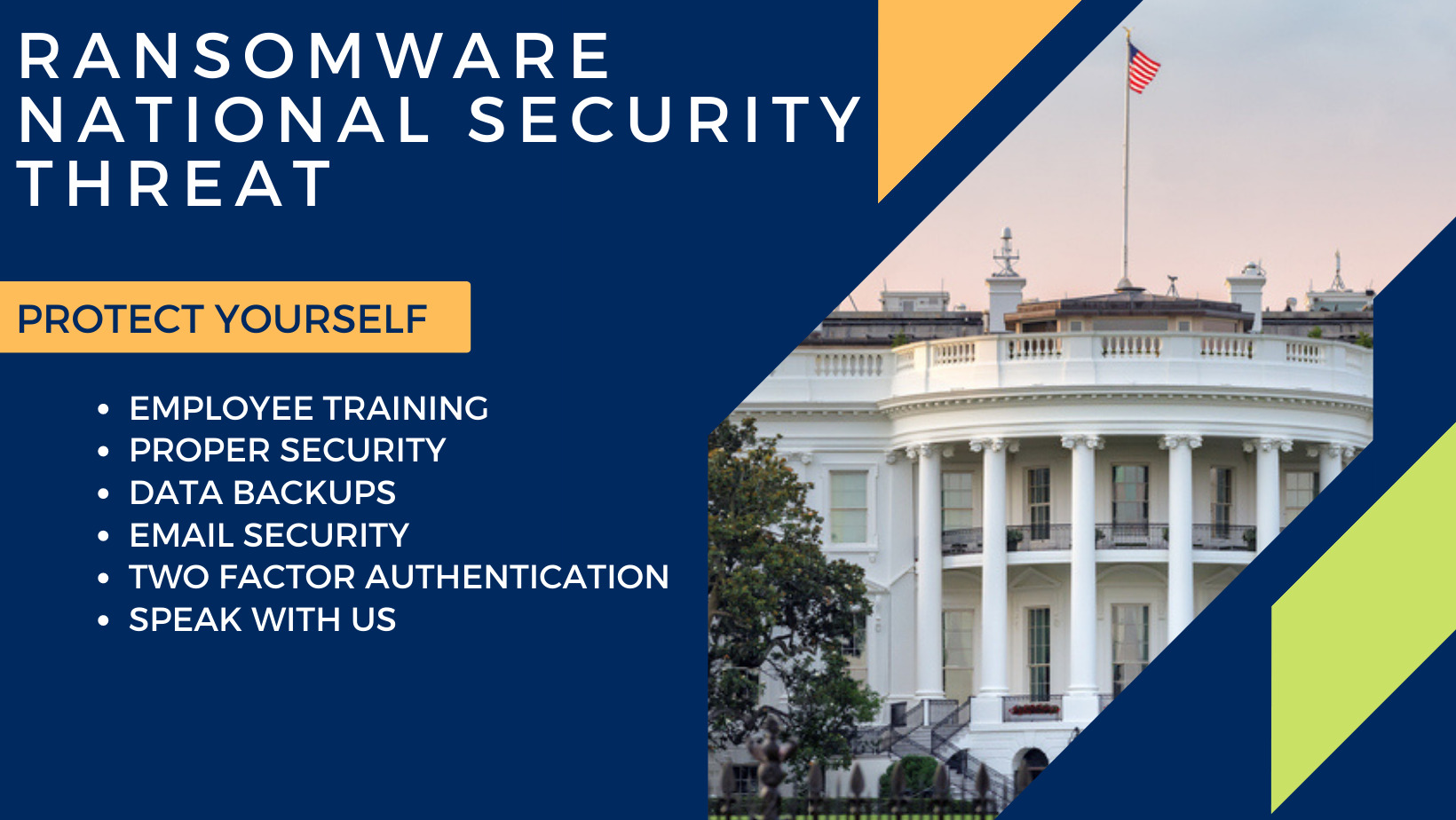New White House Cybersecurity Strategy Recognizes Ransomware Attacks as a National Security Threat Cyber threats have become a major concern for nations worldwide in the digital era. Ransomware attacks, in particular, have become a growing threat, costing businesses and governments billions of dollars in damages each year. The White House has recently upgraded ransomware attacks […]
Cyber threats have become a major concern for nations worldwide in the digital era. Ransomware attacks, in particular, have become a growing threat, costing businesses and governments billions of dollars in damages each year. The White House has recently upgraded ransomware attacks to a national security threat in its new cybersecurity strategy, highlighting the seriousness of this issue.
This article will discuss the new White House cybersecurity strategy, the impact of ransomware attacks on businesses and governments, and the measures that can be taken to prevent such attacks.

In recent years, ransomware attacks have become a significant concern for businesses and governments. These attacks involve hackers infiltrating computer systems, encrypting data, and demanding payment for the decryption key. The cost of these attacks has been staggering, with businesses and governments losing billions of dollars each year. The White House has recognized the issue’s severity and upgraded ransomware attacks to a national security threat in its new cybersecurity strategy.
Ransomware encrypts data on a victim’s computer system, rendering it inaccessible. The attackers then demand payment in exchange for the decryption key. The ransom can range from a few hundred dollars to millions, depending on the target and the amount of encrypted data.
Ransomware attacks have become more frequent and sophisticated in recent years, targeting businesses and governments worldwide. In May 2017, the WannaCry ransomware attack infected over 200,000 computers in 150 countries, causing billions of dollars in damages. In 2021, the Colonial Pipeline ransomware attack led to fuel shortages in the southeastern United States. The JBS Foods ransomware attack caused a temporary shutdown of the company’s meat processing plants.
Ransomware attacks can have a significant impact on businesses and governments. In addition to the financial cost of paying the ransom, there is also the cost of lost productivity, data recovery, and damage to the organization’s reputation. Critical infrastructure can sometimes be disrupted, leading to widespread disruption and panic.
The White House has recently released its new cybersecurity strategy, highlighting the seriousness of ransomware attacks. The system recognizes that ransomware attacks can have a significant impact on national security and outlines measures that can be taken to prevent and respond to such attacks.
Preventing ransomware attacks requires a multi-faceted approach. This includes implementing robust cybersecurity measures, such as:
Cybersecurity professionals play a critical role in preventing and responding to ransomware attacks. They can:
A robust data backup and recovery plan is one of the most effective ways to prevent ransomware attacks. This involves regularly backing up data and storing it securely off-site. This data can be restored in a ransomware attack, minimizing the impact.
As mentioned, educating employees about cybersecurity best practices is critical in preventing ransomware attacks. This includes:
Ransomware attacks are a global issue that requires a collaborative approach to combat. Governments, businesses, and cybersecurity professionals worldwide must collaborate to share information, develop best practices, and coordinate their efforts to prevent and respond to these attacks.
Ransomware attacks are a growing threat to businesses and governments, costing billions of dollars in damages each year. The White House has recognized this issue’s seriousness and upgraded ransomware attacks to a national security threat in its new cybersecurity strategy. Preventing ransomware attacks requires a multi-faceted approach, including implementing robust cybersecurity measures, having a data backup and recovery plan, and educating employees about cybersecurity best practices.
Contents